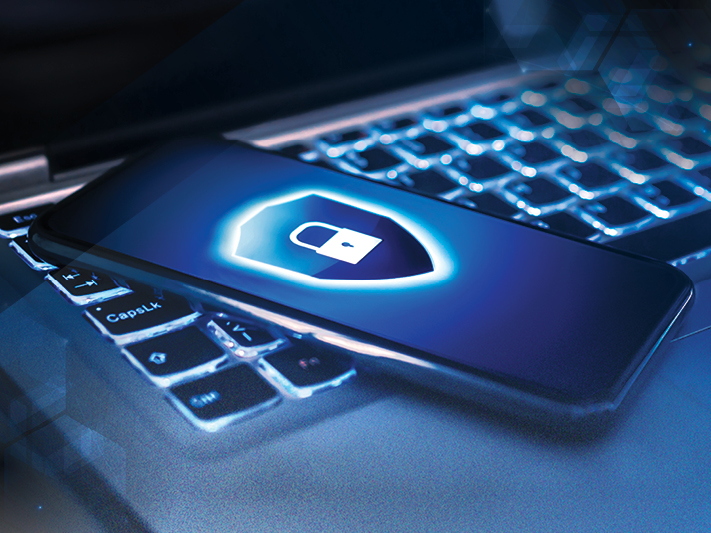The Evolution of Cybersecurity

The evolution of cybersecurity has been driven by the evolution of cybercrime. Unfortunately, technology advances also bring advances in cyberattack tactics and methods. Cybersecurity is now a fully integrated priority in today’s interconnected digital world—and is big business.
Given the increasingly complex cyberthreats in today’s world and the fact that they are growing in number and sophistication, the demand for experts in cybersecurity continues to grow. If you’re thinking of a career in digital security, here’s a bit of history about the field, along with some key trends and opportunities to keep in mind.
Early Cyberthreats and Defenses
Security was less of a consideration when the first internet was created. The U.S. Department of Defense created it as part of its Advanced Research Projects Agency (ARPA), thus the name ARPANET. Since the original idea was to connect research institutions with the military, trust was assumed. As users quickly discovered, with no way to authenticate those with access, no encryption of data, and no way to detect an intruder, ARPANET was vulnerable.
The first cybercrime was perpetrated by German hackers who infiltrated ARPANET and sold sensitive information to the Soviet Union’s KGB, the former country’s intelligence agency and secret police, in 1986. A few years later, a graduate student at Cornell University perpetrated the first large-scale cyberattack, called the Morris Worm, infecting APRANET. Following these incidents, developing security protocols like firewalls, encryption, and authentication access controls to protect systems became a priority.
The Evolution of Cybersecurity from Individual Systems to the Internet
When the closed systems of the Department of Defense evolved into the public World Wide Web, cybercrime followed. As businesses started adopting online services, cybercriminals attacked:
- The first ransomware exploit was the AIDS Trojan of 1989 that locked people out of their files.
- The first online cyberattack on a bank was when Russian hackers broke into Citibank’s network in 1994 and stole $10 million from account holders.
- One of the first uses of malware, the Melissa Virus, followed in 1999, using email to spread the virus to hundreds of thousands of computers.
- The next year saw a major distributed denial-of-service (DDoS) attack that overwhelmed websites like Amazon, Yahoo, CNN, Dell, and others.
The evolution of cybersecurity made defending connected systems a critical focus. Companies like McAfee (1987), Trend Micro (1988), and Symantec/Norton (1990) began selling cybersecurity software. Commercial solutions such as Check Point Software (1993), Internet Security Systems (1994), and Palo Alto Networks (2005) offered large-scale cybersecurity expertise to enterprises and e-commerce companies.
Modern Threats and Cybersecurity Trends

The evolution of cybersecurity continues to grow apace. The global market was valued at $193.73 billion globally in 2024 and is projected to grow to $562.72 billion by 2032. The challenges are expanding, too:
- Cloud computing puts volumes of sensitive data out there to tempt cybercriminals and even insider threats. It just takes a simple misconfiguration or slip-up in access for disaster to strike.
- Hacktivism refers to political and socially motivated attacks. Bordering on cyberwarfare and espionage, well-funded and sophisticated attackers go after large enterprises, governments, and any vulnerability.
- Data breaches are a huge threat to cybersecurity. Sometimes involving data theft, seeking ways to breach defenses, or sabotaging systems to bring down industries and infrastructure, these attacks are truly devasting.
- Advanced persistent threats where attackers breach defenses and operate undetected for months and years lead to losses and destruction that are hard to quantify.
As fast as cybercriminals change tactics and targets, cybersecurity professionals respond to protect vital systems. Working in ethical hacking, those developing effective defenses, cybersecurity frameworks, cybersecurity tools, and digital security best practices aim to stay ahead of cybercriminals. Using AI in cybersecurity is another subfield seeing rapid advances.
The Future of Cybersecurity with Excelsior
Beyond the use of AI in cybersecurity, quantum computing is the next technology breakthrough in digital defense—and, of course, in cybercrime. The evolution of cybersecurity is arriving at a place where current encryption methods are likely to be obsolete in the face of massive computing power.
Earning a cybersecurity degree from Excelsior University will put you at the forefront of advances in this field. In addition to learning current cybersecurity best practices, you’ll gain expertise in automation, resilience approaches, proactive defense, and emerging technologies. If you’re seeking leadership roles, Excelsior’s Master of Science in Cybersecurity gives you the educational foundation you need to take on more responsibility and drive the future of your organization and the industry.
A career in cybersecurity and digital defense is constantly evolving and exciting. And regardless of whether you’re just starting out, advancing to the next level, or setting your sights on the C-suite, Excelsior’s world-class programs can give you the skills and confidence to achieve your goals and make your own mark on the history of cybersecurity.




